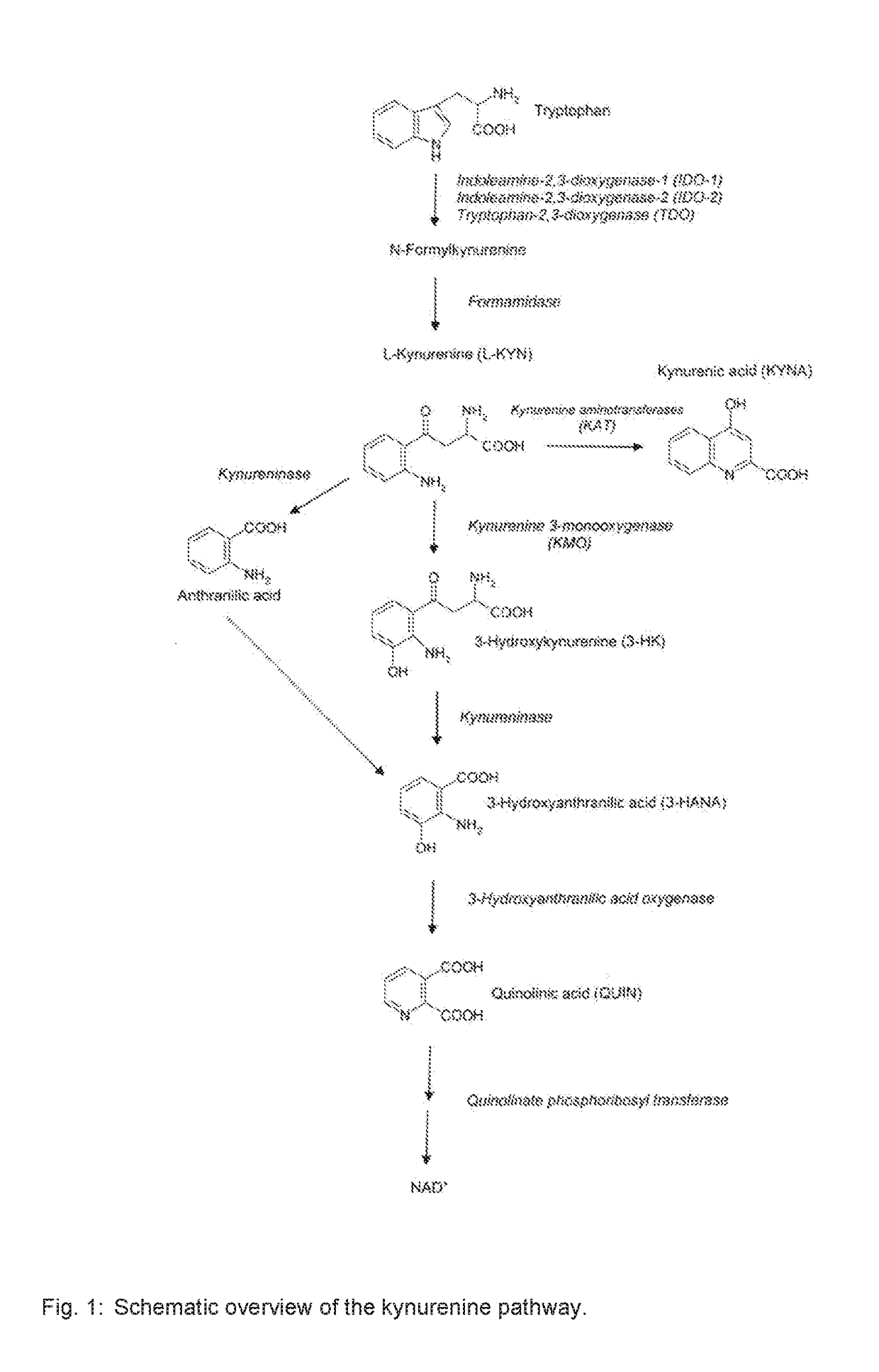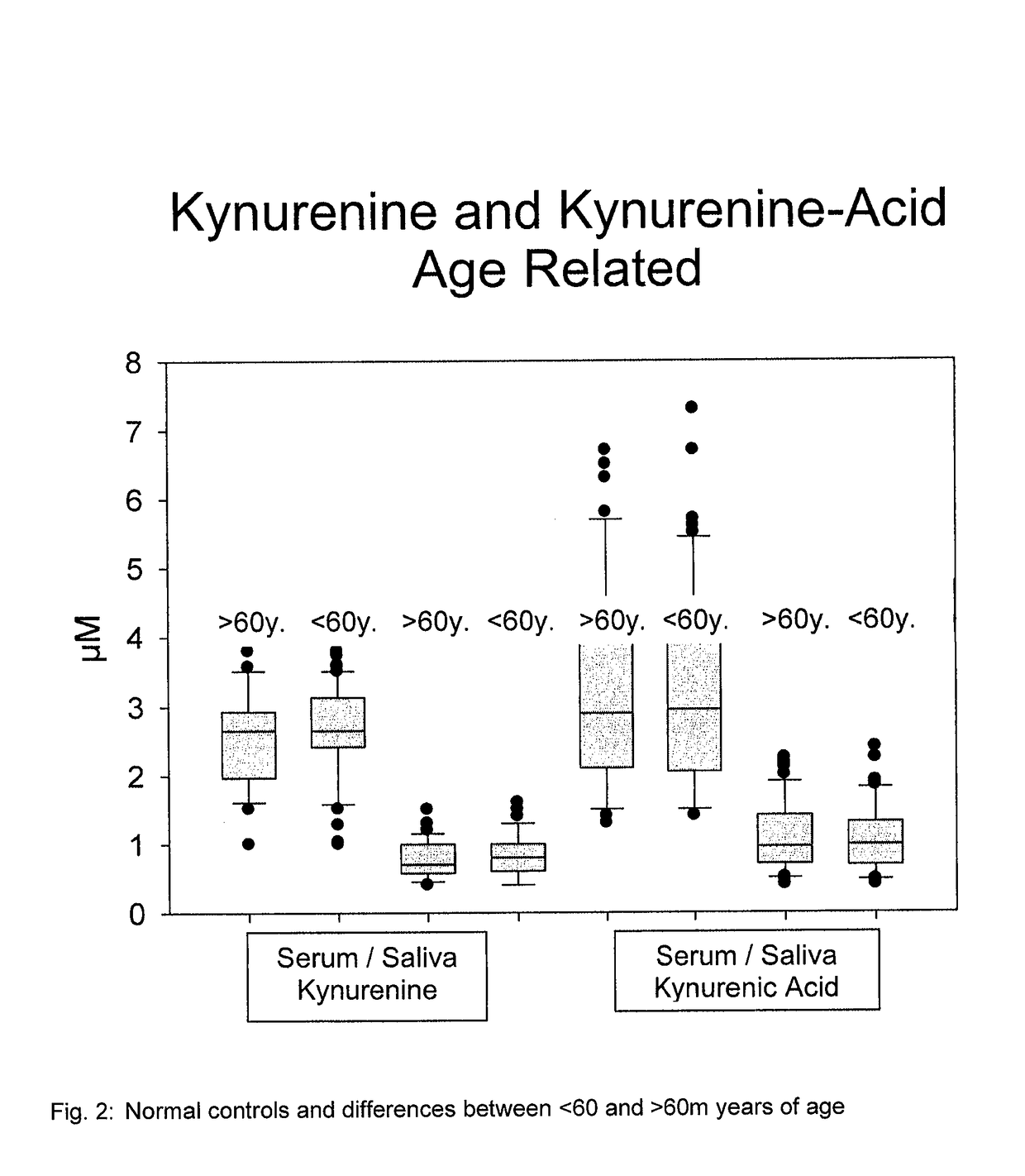In vitro method for the determination of neurodegenerative diseases
a neurodegenerative disease and in vitro method technology, applied in the field of in vitro method for the determination of neurodegenerative diseases, can solve the problems of insufficient neuroprotective therapy, difficult management of neurodegenerative diseases, and inability to completely solve the mechanisms leading to this entity
- Summary
- Abstract
- Description
- Claims
- Application Information
AI Technical Summary
Benefits of technology
Problems solved by technology
Method used
Image
Examples
example 1
[0088]Forty-two patients with cerebral dementia (mean age 71+5.3 years, mean MMS-score 22) were enrolled in a comparative study with normal controls (n=194; mean age 48.8 years, range 16-88 years). Aim of our study was to detect changes in the tryptophan metabolism in patients with cerebral dementia, by estimating either kynurenine, kynurenic acid and ratio of kyn / kynA in plasma and in saliva. There was no age related difference between a group I of normal controls (n=93, age>60, mean age 71.3 years, range 60-88) and group II (n=101, age<60, mean age 38.8, range 16-60; FIG. 2). This is demonstrating that the disease must not necessarily be age related in general. The neurodegenerative diseases may be caused by different reasons whereby, however, the frequency of neurodegenerative diseases increases statistically with increasing age.
example 2
[0089]Kynurenine was significantly higher and kynurenic acid lower and ratio was different in patients with neurodegenerative disorders. This could be demonstrated in serum as well as in saliva. The measured values are shown in FIG. 3.
[0090]There was a correlation between the values of kynurenine and kynurenic acid in serum compared to saliva (saliva 1:3.5 in serum for kynurenine and 1:3.2 in saliva for kynurenic acid in normal controls, FIG. 4).
example 3
[0091]Patients with neurodegenerative disease showed a total different pattern: mean values for kynurenine in serum as well as in saliva were significant higher (4.80±0.6 μM for serum and 1.34+0.3 μM for saliva) whereas values for kynurenic acid were significant lower (1.58±0.3 in serum and 1.3±0.2 in saliva, FIG. 3). This is in correspondence with the theory of the pathophysiology of the disease: the neuro-protective part (kynurenic acid) is downregulated and the inflammatory part (kynurenine) is upregulated.
PUM
| Property | Measurement | Unit |
|---|---|---|
| oxidative stress | aaaaa | aaaaa |
| volume | aaaaa | aaaaa |
| cognitive functional disorder | aaaaa | aaaaa |
Abstract
Description
Claims
Application Information
 Login to View More
Login to View More - R&D
- Intellectual Property
- Life Sciences
- Materials
- Tech Scout
- Unparalleled Data Quality
- Higher Quality Content
- 60% Fewer Hallucinations
Browse by: Latest US Patents, China's latest patents, Technical Efficacy Thesaurus, Application Domain, Technology Topic, Popular Technical Reports.
© 2025 PatSnap. All rights reserved.Legal|Privacy policy|Modern Slavery Act Transparency Statement|Sitemap|About US| Contact US: help@patsnap.com



